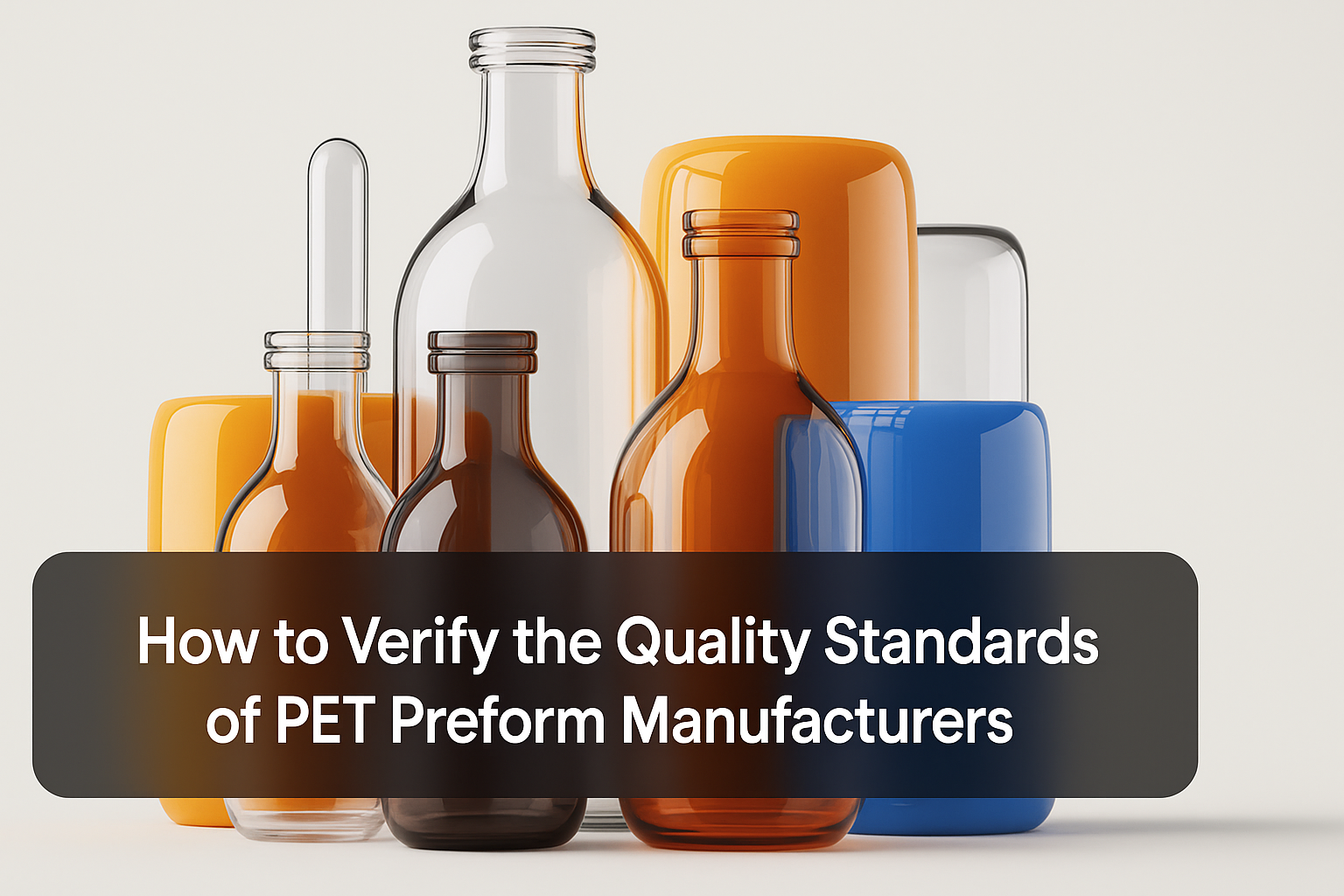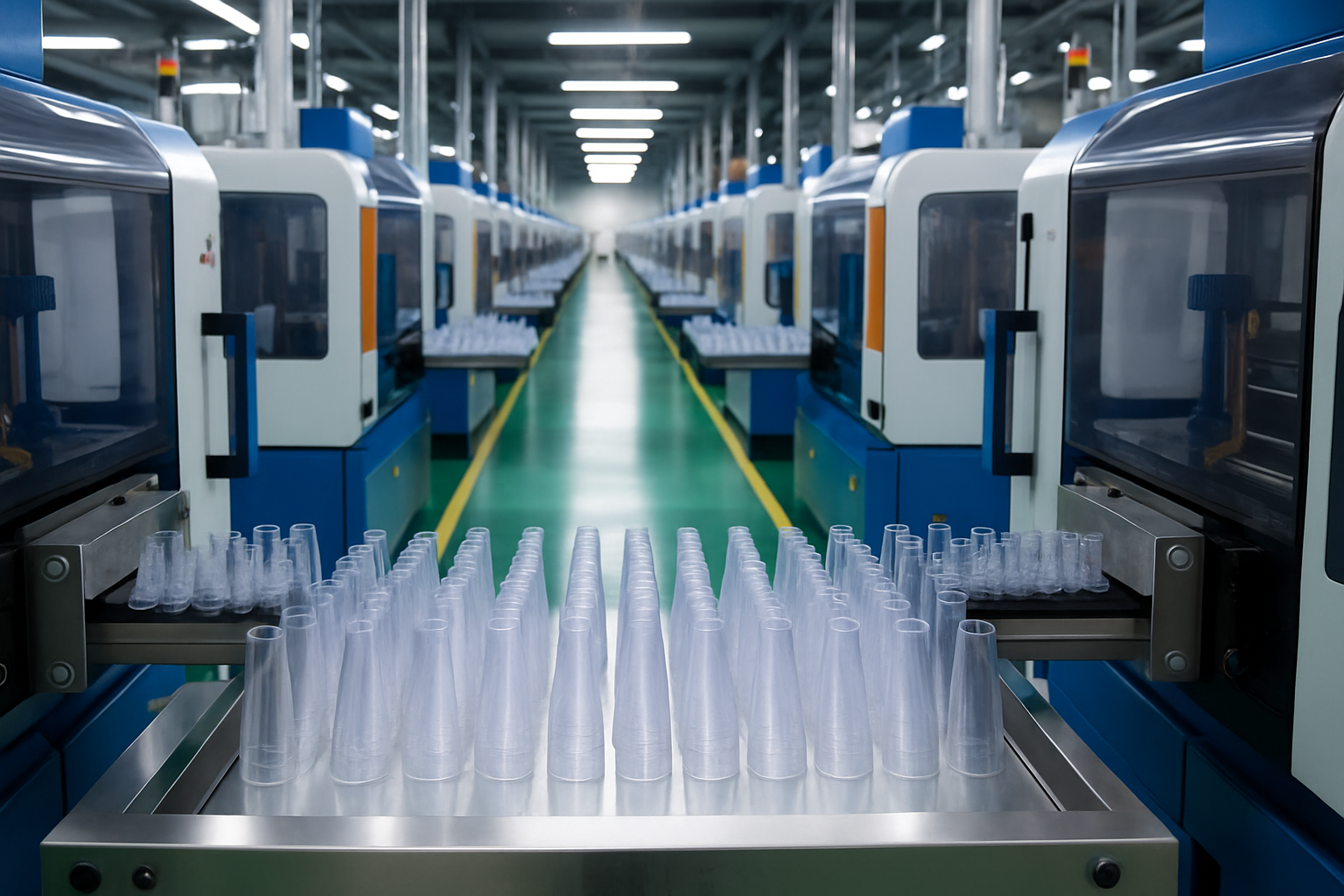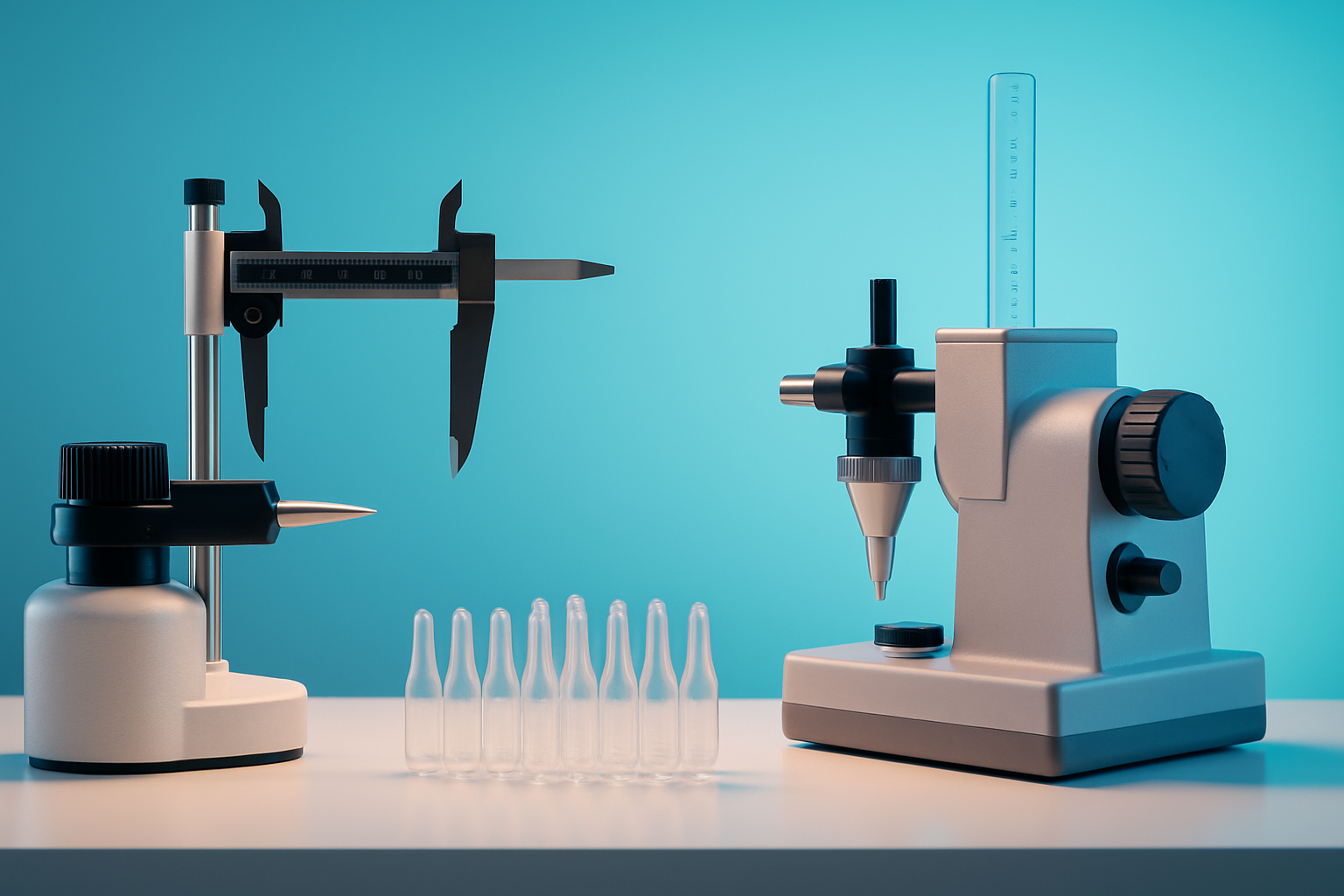How to Verify the Quality Standards of PET Preform Manufacturers
“`html

Thinking of buying PET preforms for your bottles? Whether it’s for water, juices, or other products, getting the right quality is super important. In a busy market like Delhi, India, many manufacturers offer PET preforms. But how do you make sure you pick one that delivers consistent, high-quality products? This guide will walk you through the essential steps to verify quality standards, helping you make smart choices.
Choosing the right PET preform isn’t just about saving money. It’s about protecting your brand, ensuring your products are safe, and keeping your production line running smoothly. A poor-quality preform can lead to broken bottles, wasted materials, and unhappy customers. Let’s dive into what makes a preform truly good.
Understanding “Quality” in PET Preforms: What Matters Most?
First, let’s understand what “quality” means for a PET preform. It’s more than just how it looks. Many technical details play a big role in how well your final bottle will perform.
Initial Visual Check: Your First Step
- Clarity and Colour: A good preform should be perfectly clear, like glass, with no cloudiness or discolouration. If you need a coloured preform, the colour should be uniform throughout.
- No Specks or Contamination: Look closely for tiny black spots, dust, or any foreign particles embedded in the plastic. These can weaken the bottle and make your product look bad.
- Gate Quality: The “gate” is where the plastic was injected into the mould. It should be smooth, with no sharp edges or excessive material hanging off. Poor gate quality can cause problems during bottle blowing.
- Absence of Bubbles or Voids: You shouldn’t see any air bubbles trapped inside the preform. These are defects that indicate poor manufacturing and can lead to weak spots in the bottle.
Critical Physical & Chemical Properties
Beyond what you can see, there are important technical properties that determine preform quality.
- Weight Consistency: Every preform in a batch should have almost the exact same weight. Imagine your bottling line suddenly halting because 10% of your bottles are bursting due to uneven wall thickness. That’s the real cost of inconsistent preform weight. Varying weights lead to different wall thicknesses, making some bottles weaker and others prone to breaking during blowing.
- Dimensions & Tolerances: The neck of the preform, its overall length, and wall thickness must be precise. These measurements are crucial for a tight seal on your bottle and for fitting correctly into your blowing machines.
- Intrinsic Viscosity (IV Value): This is a scientific measure of the PET polymer’s strength. A good IV value means the material is strong and flexible, which is vital for making durable bottles. It’s usually tested in a lab.
- Acetaldehyde (AA) Content: For food and beverage products, low AA levels are a must. High AA can affect the taste and smell of your product, making it unsafe or unappealing. This is especially important for high-quality PET preforms for packaged water.
- Barrier Properties: Some products, like juices or medicines, need bottles that protect them from oxygen or UV light. Special preforms with “barrier properties” are designed for this. Make sure your manufacturer understands these specific needs if your product requires them.
Technical Specifications Table: Standard PET Preforms
| Specification | Typical Value / Range | Measurement Unit / Standard |
|---|---|---|
| Material Type | Polyethylene Terephthalate (PET) | Food Grade Virgin PET Resin |
| Preform Weight Range | 15g – 45g (Common bottle sizes) | Grams (g) |
| Neck Finish Standard | PCO 1810, PCO 1881, 28mm BPF | Millimeters (mm) |
| Intrinsic Viscosity (IV) | 0.76 – 0.82 | Deciliters per gram (dl/g) |
| Acetaldehyde (AA) Content | < 3.0 | Parts per million (ppm) |
| Clarity | High Transparency | Visual / Hazemeter |
| Wall Thickness Uniformity | ± 0.05 | Millimeters (mm) / Percentage (%) |
| Gate Type | Valve Pin / Hot Runner | Visual |
| Recommended Processing Temp. | 90°C – 120°C (Preheating) | Degrees Celsius (°C) |
| Regulatory Compliance | BIS, FSSAI, FDA (as applicable) | Certifications |
| Typical Applications | Packaged Water, CSD, Edible Oil, Juices | Industry Specific |
Navigating Indian Quality Standards & Regulations
For any business in India, complying with national standards is not just good practice; it’s often the law. Here are the key certifications and regulations you should know about for PET preforms.
Bureau of Indian Standards (BIS): Your National Benchmark
The BIS sets quality standards for many products in India, including plastics. Look for manufacturers who adhere to relevant BIS standards for PET materials and bottles. For example, IS 14534 is crucial for PET bottles used for packaged drinking water. A BIS certification mark shows the manufacturer meets these national quality benchmarks.
Food Safety and Standards Authority of India (FSSAI): For Food Contact Packaging
If your PET preforms will be used for food or beverage packaging, FSSAI compliance is non-negotiable. This authority ensures that packaging materials are safe for food contact and won’t transfer harmful substances to your product. Always ask for proof of FSSAI compliance for food-grade preforms.
International Certifications: Building Extra Trust
While BIS and FSSAI are critical for India, some international certifications add another layer of trust. ISO 9001, for instance, means the manufacturer has a strong quality management system in place. ISO 22000 focuses specifically on food safety management, offering extra assurance for food-grade products.
Finding Quality PET Preform Manufacturers in Delhi, India: What to Expect
When searching for a manufacturer, it’s helpful to know what a truly quality-focused company looks like. Here’s what to keep an eye out for:
Robust Raw Material Sourcing & Traceability
A good manufacturer starts with good raw materials. They should use high-quality PET resin from reputable suppliers (like Reliance or Indorama). They should also have a system to trace every batch of preforms back to the original resin. This helps in case of any quality issues.
Advanced Manufacturing & In-Process Quality Control
Look for manufacturers using modern injection molding machines. These machines offer better precision and consistency. Many top manufacturers use automated vision systems to check every preform for defects during production. This drastically reduces errors and ensures uniform quality.

Comprehensive In-House Laboratory & Testing Capabilities
A reliable manufacturer will have its own well-equipped lab. They should be able to perform regular tests for IV value, AA content, dimensions, and weight. Crucially, their equipment should be calibrated regularly, and they should keep detailed records of all test results.

Transparent Documentation & Record Keeping
A quality manufacturer won’t shy away from sharing information. Ask for Certificates of Analysis (COA) for each batch of preforms. These documents confirm that the batch meets specified quality standards. They should also provide Material Test Certificates (MTC) from their resin suppliers. Good documentation means they stand by their product.
Your Action Plan: Step-by-Step Quality Verification
Now, let’s put it all together. Here’s a practical guide for you to verify the quality of potential PET preform manufacturers.
Step 1: Initial Supplier Screening
Don’t just go for the cheapest quote. Ask potential manufacturers for their company profile, client references, and copies of all their certifications (BIS, FSSAI, ISO). Check their online presence and how transparent they are about their processes. A good reputation speaks volumes.
Step 2: Technical Data Sheet & Sample Evaluation
Request a detailed Technical Data Sheet (TDS) for the preforms you’re interested in. Compare these specifications carefully with your own requirements. Then, ask for samples. Perform your own visual checks, dimensional measurements, and, if possible, send them to a third-party lab for IV and AA testing. You can also blow them into bottles to check their performance.
Step 3: The On-Site Factory Audit: What to Look For
This is perhaps the most critical step. If you’re serious about a supplier, plan a visit to their factory. Prepare a checklist beforehand. During the visit, pay attention to:
- Cleanliness: A clean factory environment reflects a commitment to quality.
- Equipment: Are machines well-maintained? Are they modern?
- Process Control: How do they monitor production? Do they have automated systems?
- Quality Control Lab: Is it well-equipped and organized? Are technicians knowledgeable?
- Storage: How are raw materials and finished preforms stored? Are they protected from dust and damage?
- Personnel: Talk to the production and QC managers. Their knowledge and dedication are key indicators of quality focus.
A thorough factory audit can tell you a lot about a manufacturer’s commitment to delivering high-quality PET preforms designed for various bottle types.
Step 4: Post-Audit & Ongoing Quality Monitoring
Even after selecting a supplier, quality checks don’t stop. Establish clear communication. Regularly ask for COAs with each batch. It’s also wise to conduct periodic re-testing of received preforms. Monitor how well the preforms perform on your own production lines. Consistent quality is key for a long-term partnership.
Red Flags & Common Pitfalls to Avoid
Watch out for these warning signs that might indicate a less-than-reliable manufacturer:
- They are unwilling to share documentation, allow factory audits, or provide client references.
- The quality varies significantly between samples or test batches you receive.
- They lack essential certifications like BIS or FSSAI (especially for food-grade preforms).
- Their pricing is unusually low compared to the market average, which might suggest compromised raw materials or production processes.
- Communication is poor, responses are delayed, or they lack transparency.
Benefits of Rigorous PET Preform Quality Verification
Taking the time to verify quality isn’t just an expense; it’s an investment. The benefits are substantial:
- Enhanced Product Safety: You ensure your packaging won’t harm your product or consumers.
- Reduced Production Downtime: Good preforms run smoothly on your machines, avoiding costly stops and rejections.
- Cost Savings: Less waste, fewer rejections, and efficient production mean real savings in the long run.
- Stronger Brand Reputation: Consistent quality bottles reflect positively on your brand and build consumer trust.
- Reliable Supply Chain: You build trust with dependable partners, ensuring a stable and efficient flow of materials.
Real Case Studies: Impact of PET Preform Quality
Case Study 1: Enhancing Production Efficiency for a Leading Beverage Manufacturer
A prominent bottled water company was struggling with high rejection rates on their blowing lines, leading to significant material waste and production downtime. Upon investigation, they identified inconsistent weight and dimensional variations in their existing PET preform supply as the primary culprit. They partnered with a new, BIS and ISO 9001 certified PET preform manufacturer known for its robust quality control processes and in-house laboratory testing. The new supplier provided preforms with tighter weight tolerances (±0.05g) and consistent neck finishes. As a result, the beverage manufacturer saw a 15% reduction in production line rejections and an 8% increase in Overall Equipment Effectiveness (OEE) within six months, leading to substantial cost savings and improved output.
Case Study 2: Ensuring Product Integrity for a Pharmaceutical Liquid Manufacturer
A pharmaceutical company producing oral liquid medicines required PET bottles that would not leach any undesirable compounds or affect the taste/efficacy of their sensitive formulations. Their existing preform supplier could not consistently guarantee ultra-low acetaldehyde (AA) levels, posing a potential risk to product integrity. The pharmaceutical firm switched to a PET preform manufacturer holding FSSAI and ISO 22000 certifications, specializing in pharmaceutical-grade preforms. This manufacturer provided detailed Certificates of Analysis (COAs) for every batch, confirming AA content below 1.5 ppm. Since the switch, the pharmaceutical company has reported zero complaints related to taste or odor contamination in their products and has successfully passed all regulatory audits for packaging material safety, reinforcing consumer trust in their brand.
Case Study 3: Extending Shelf Life for a Specialty Food Producer
A producer of premium fruit juices faced challenges with premature spoilage and flavor degradation due to inadequate barrier properties in their PET bottles. Oxygen ingress was significantly shortening the shelf life of their products. They collaborated with a PET preform innovator who offered specialized multi-layer barrier preforms designed to significantly reduce oxygen transmission rates. After rigorous testing and validation, the producer implemented these new barrier preforms. This change resulted in an extension of product shelf life by an average of 3 months and a 90% reduction in product returns due to spoilage, allowing them to expand into new markets and maintain product freshness for longer periods.
Conclusion: Investing in Quality, Securing Your Future
Verifying the quality standards of PET preform solutions from manufacturers in Delhi, India, is a critical step for any business to ensure reliability. It protects your investment, ensures consumer safety, and ultimately strengthens your brand. By following this guide and asking the right questions, you can confidently choose a manufacturer that meets your quality expectations every time.
FAQs
“`

